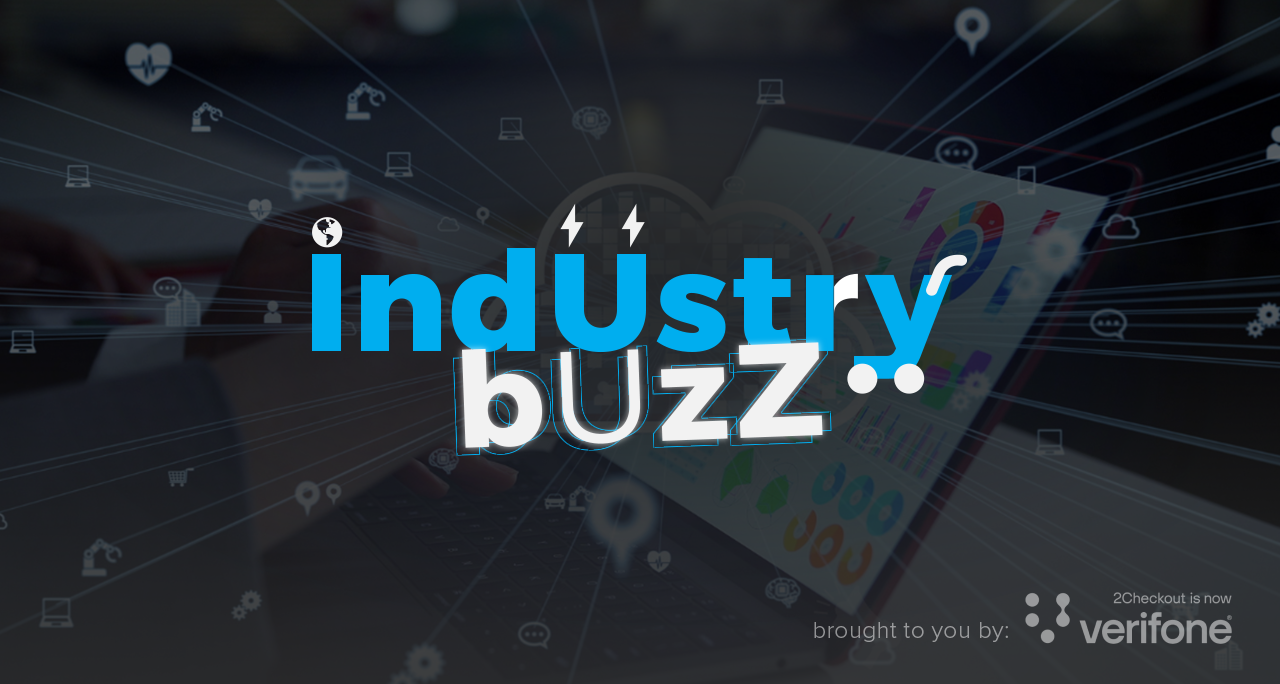It’s true to say that AI is inherently changing how people shop and how sites perform.
Buyers ask questions in chat and get one comprehensive answer, not just a list of links.
Agents can compare products, start a checkout, or set a reorder. Inside your stack, new AI tools can scan sessions, flag issues, and suggest fixes.
The upside is real, but so are the risks around visibility, trust, and data quality.
This year’s CommerceNow hosted three experts who showed what works today and what to prepare for next:
- Garett Sussman explained how conversational search shapes decisions and what makes brands show up.
- Roxana Patrichi laid out a clear path for agentic AI that keeps control, safety, and the customer in mind.
- Enrico Pavan showed how to use AI to speed CRO work and turn data into steady wins.
If you are working to grow revenue, lower risk, and keep customers moving through checkout, read on for the key takeaways from the webinar and the steps to put them in place.
Are You Visible in Conversational Search?
As mentioned earlier, search is not just a list of links anymore.
Shoppers ask a question and get one answer. Google shows AI Overviews, and AI Mode becomes the default view for more users.
ChatGPT, Perplexity, and Copilot do the same kind of work. Each system decides which brands to name based on the data it can trust.
Garett Sussman – Director of Marketing at iPullRank – explains that visibility is now about being recommended, not just ranked. These tools expand a query into many related ones, then combine the results into a single answer.
They break a question into many smaller ones and look for simple, specific facts they can trust. And that makes your job simple: give them clean data, proof, and structure so they pick your product.
Garett also notes that answers change, partly because the systems use memory and context. Two users can ask the same thing but see different brands, based on history and signals in their accounts.
That’s why it’s important to aim for a steady, ongoing presence, rather than one fixed position.
What Drives Bias in AI Results
Platforms have their own patterns, and people do too. That’s because users trust names they know and the first brand they see.
The good news is that you can absolutely work with this. Build strong reviews, expert quotes, and social proof. Make your product pages complete. Clear details and real proof help both the model and the shopper choose you.
Where These Answers Come From
Product answers draw on Google’s Shopping Graph, Merchant Center, and trusted source pages.
Complete, current details such as price, variants, images, specs, availability, reviews, retailer data, and YouTube signals all raise your chances to appear. However, when this data is incomplete or stale, your brand is less likely to be included.
How You Earn AI Recommendations
Sussman shares a simple playbook you can run in a week:
- Start with a brand audit
Search your own brand and key products in AI Overviews, AI Mode, ChatGPT, Perplexity, and Copilot. Note how your business is described, which pages are cited, and what is missing.
- Complete your Merchant Center feed
Fill every field. Keep price, images, variants, and availability current. Encourage reviews with real detail.
- Use structured data
Add schema and fix errors. Tools like WordLift can help.
- Write for machines and people
Use short, clear sections on each product or content page. State facts with numbers and specifics. Make relationships clear with simple statements like “X is Y.”
Keep the key details together on that page, rather than scattered across different links.
- Win citations
Get your products and guides mentioned on the pages these LLM models already cite.
Remember: mentions on those sources increase your chance of inclusion, even without a backlink. Use SparkToro to see where your audience pays attention, then place your product pages, guides, and mentions on those sources.
- Track and improve every week
Garett recommends using tools like Profound, Peak, XFunnel, or Scrunch to check where your brand appears in AI results.
Look for how often you are named, how you are described, and which pages are cited. Open Hewphoria to see the related queries that AI Mode expands to. Add clear answers for those queries to your site.
Don’t forget to review these checks each week and update weak spots.
And lastly, focus on the real opportunity. Garett points out that the biggest gains come from specific product searches, not broad information queries. Ensure to meet those shoppers with exact details, credible proof, and a clear path to buy.
Make sure to watch Garret’s full CommerceNow’25 session to learn more about how biases in conversational search influence eCommerce decisions.
Redefining eCommerce with Agentic AI
Agentic AI sounds powerful, but it only works when the rules are clear. Roxana Patrichi, who is the Product Manager of Checkout Experience at 2Checkout, points out that the goal right now is safe assistance, not full autonomy.
Agents help people compare, pre-fill forms, and move through checkout, while you set limits, keep a human in the loop, and log what happens so decisions are easy to explain later.
Why guardrails come first
Roxana explains that an agent can only act for a shopper when five things are in place:
- consent,
- fraud controls,
- shopper-not-present identity,
- audit trails,
- and a human checkpoint.
Roxana uses a simple example: if an agent tries to buy on a shopper’s behalf, you must know who’s old enough to consent, who accepted the terms, and who’s allowed to use the card. If any of that is unclear, the agent will pause and ask for approval. This is because legal clarity matters.
Roxana explains that teams need to decide who is responsible for an agent’s purchase, how consent is captured, and how to unwind a step when something goes wrong.
Privacy is part of this. Be open about what the agent sees and why, and make sure to add a clear “undo” so the shopper stays in control.
Where value shows up now
Roxana argues that the best wins sit in the parts of your site you already run. Hence, focus on removing extra steps, instead of building new paths:
- In chat, let shoppers ask and pay in the same thread.
- If a visitor is about to leave, show a clear, relevant save offer.
- For repeat buyers, offer quick, safe reorders with simple limits.
Keep each change small, visible, and easy to measure.
What 2Checkout explores
To make agents useful, your product data needs to be easy to read and trust. Roxana points to a few simple, practical areas:
- Catalogs your agents can read. Use clear names, specs, prices, and images so products are easy to understand.
- Checkout that asks less. Hide fields you don’t need and pre-fill what you can.
- Fraud rules you can tune. Start with safe limits and tighten them when risk goes up.
- Help that starts with an assistant. Answer common questions fast, then hand off to a human when needed.
- Renewals at the right time. Retry payments when they are most likely to succeed, not at random.
- Help content that’s easy to find. Organize guides so answers are quick to reach.
Behind the scenes, set simple taste and ethics rules so suggestions match your brand and your customers, not just clicks.
How to start without adding risk
Roxana recommends starting small:
- Run a short pilot with one clear goal and a tight scope.
- Pick a single flow, write simple rules for what the agent can and can’t do, and define what success looks like before you scale.
- Record everything the agent does: the prompts, actions, and results, so it’s easy to review later.
- Keep a human in the loop for anything unusual or high risk.
- Track a few basics: completion rate, time to complete, approval rate, and refunds.
She advises expanding only when the numbers are stable and the experience is easy to explain to both your team and your customers.
Get access to more of Roxana’s insights by watching her entire CommerceNow’25 session.
Conversion Rate Optimization with AI
AI helps when it takes work off your plate and points you to fixes that move revenue. Enrico Pavan, Co-Founder & President, Analytics & CRO Director of Analytics Boosters, makes this clear from the very start.
He advises: use AI to speed the work, but keep the judgment yourself; if your data is messy, AI will only make the mess bigger – clean data in means better insights out.
Why the mindset matters
Enrico argues that CRO wins come from data activation, not more dashboards.
Hence, bring your key signals into one place, look for leaks, and ship small tests each week.
Remember: AI helps collect, clean, and summarize. You still decide what to test, why it matters, and whether it worked.
He also points out that a steady pace beats big, rare launches. For example, a short weekly loop keeps the team focused: reviewing insights, picking one high-impact test and one small fix, launching, then learning.
What works in the stack today
Enrico draws a line between GA4’s weak “ask me a question” tools and the one part that actually helps – the Anomaly Detection view in Explorations.
It automatically spots unusual changes in your numbers, like a sudden drop in traffic or sales. You can set how sensitive it is, and it will flag anything that looks off so you and your team can act before it costs you money.
To see what visitors actually do on the page, he pairs GA4 with Microsoft Clarity. Clarity summarizes sessions and flags spots where users get frustrated with repeated clicks. He also checks “predictive heatmaps” on draft pages to see if buttons and key items get noticed before launch.
Then he brings the numbers together:
A central database like BigQuery pulls in data from GA4, Clarity, email, CRM, ads, and your store so you can see the full journey instead of guessing.
With everything side by side, patterns pop: one browser blocks a key script, a layout hides shipping costs, or a campaign brings visitors who never scroll.
The eight-agent workflow (Winston, the Data Hound)
Think of Winston as eight small helpers that pass work down the line:
- Collect events
Pull in events from GA4, Microsoft Clarity, your ESP, CRM, ad platforms, and orders. - Clean the names
Standardize names for pages, devices, and campaigns so everything lines up. - Spot funnel drop-offs
Find where people leave: by page, browser, and source. - Suggest tests
Suggest simple tests, how much work they take, and the likely gain. - Check attribution
Make sure the right channels get credit before you act. - Predict impact
Give basic forecasts with “what if” ranges. - Personalize or retarget
Reach key segments with tailored offers or fixes. - Report weekly
Share a short summary and a next-test list.
You can adjust how creative these agents are: keep analysis tight for numbers, and allow more freedom when you want copy or layout ideas.
Three examples you can run now
Email, full funnel
- Join your ESP data with GA4 post-click behavior.
- Build a correlation heatmap that links subject lines and offers to product views, add-to-cart, and purchases.
- Remember that Apple’s Mail Privacy Protection hides real opens, so treat those numbers carefully.
- Let an agent draft three subject lines and one preheader per segment.
- A/B test the top two and keep the winner.
Video to revenue
- Merge YouTube data with GA4 events and orders.
- Rank topics by revenue per view and view-to-cart rate.
- Shape your next videos around the formats and lengths that move orders, not just views.
UX fixes that save revenue
- Export Clarity signals like dead and rage clicks by browser and campaign.
- Tie them to GA4 conversion loss.
- Fix the pages that recover the most revenue first, then push those items into your A/B roadmap.
Guardrails first: consent, identity, fraud checks, and a human in the loop
Enrico points out that trust beats speed. He recommends to use consented, first-party data, and logging changes so you know when a test starts and ends.
Other things to keep in mind:
- Double-check agent insights against real sessions and raw tables.
- Watch for fake gains from coupon abuse, self-referrals, or tracking gaps.
- Keep a human involved for odd or unclear situations that AI might miss.
What to measure each week
Stick to a short list you can act on:
- Email: open rate, click rate, and engagement rate.
- On-site: session conversion rate, add-to-cart, purchases, and revenue.
- UX: Clarity’s rage and dead clicks, linked to those GA4 results above.
Don’t miss out on Enrico’s full session to learn how integrating AI into your CRO efforts can boost your strategies.
Discover More with CommerceNow’25
What you’ve read is only a glimpse.
Ready to put it to work in your stack? Watch the full CommerceNow’25 sessions for in-depth examples, checklists, and practical tips from every session.








